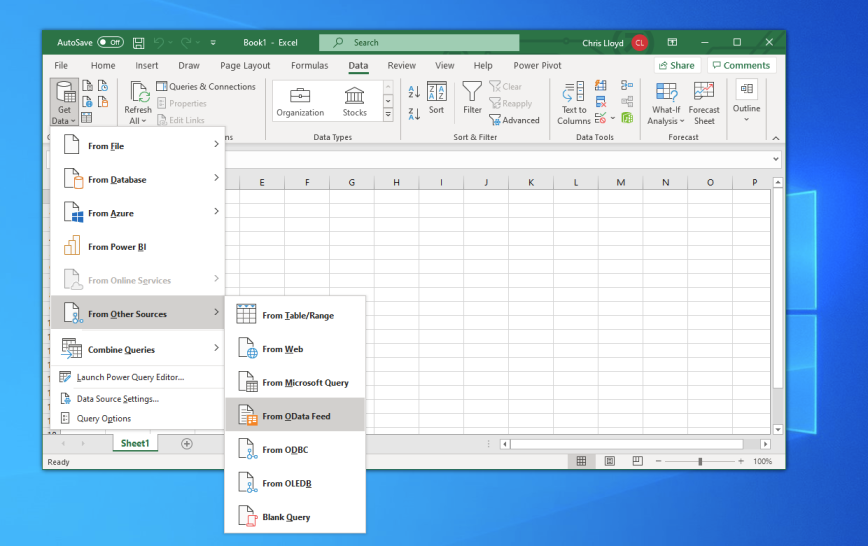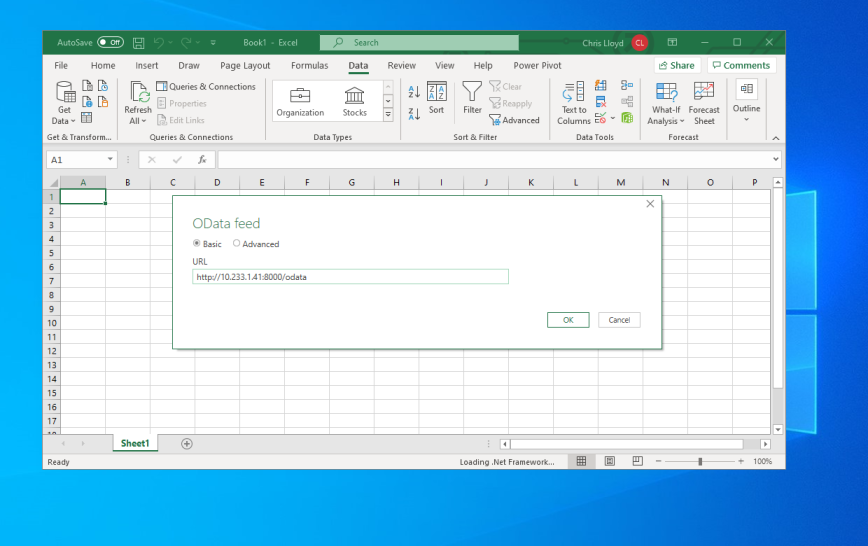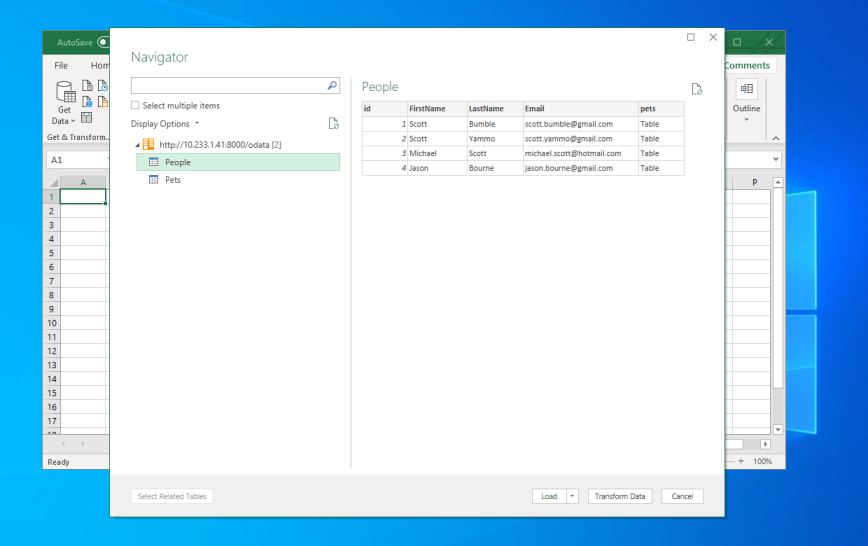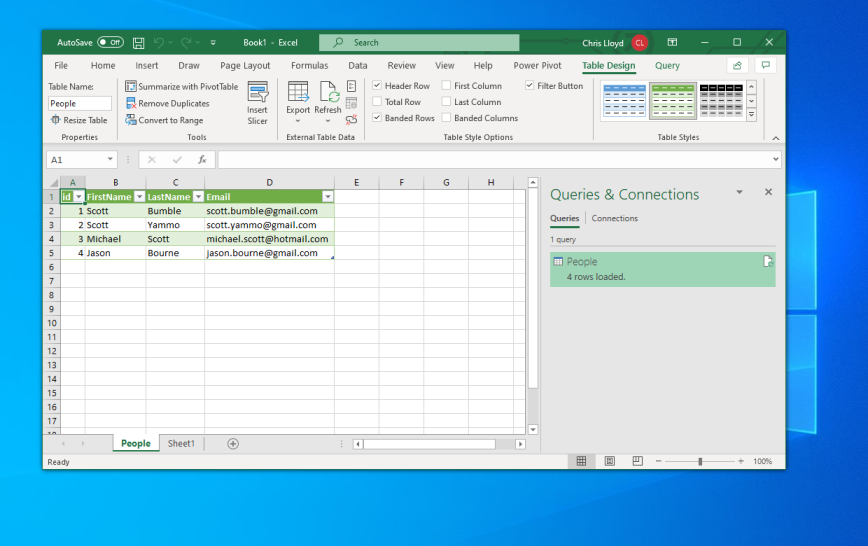# Microsoft Excel
Microsoft Excel 2019 (opens new window) (and some earlier versions) supports live updating OData Feeds (opens new window) using Power Query.
# Importing manually
An OData entity set can be imported into Excel using the following steps. Once imported the model can be updated by clicking the "Refresh" button on the toolbar. Excel understands OData types and will automatically type the columns according to the schema. Excel can also recognise and import the relationships between models, and can create pivot table automatically from this information.
# Step 1 - Get Data from OData Feed

# Step 2 - Supply the OData endpoint
At this stage if Lodata has authentication configured the user will be prompted for their credentials. Credentials are not stored in the sheet. If the workbook is sent to another user they will be prompted to authenticate when they open it.

# Step 3 - Choose the set
Excel parses the metadata document and identifies importable sets. Choosing the "Select multiple items" checkbox will enable Excel to import several sets at once, and to automatically import any relationships that exist between them.

# Step 4 - Load the data
When importing a single set the data can be loaded into a sheet. Now that the data connection has been established the Refresh button can be used on the toolbar to reload the sets.

# Importing automatically
Lodata provides an easy way to add a "Connect to Excel" button in your application using an ODCFF (opens new window) document. This document contains the information needed to make the connection as described above.
The URL provided for this button will be for a specific entity set, for example if you have the Users entity set
defined: http://127.0.0.1:8000/odata/_lodata/Users.odc (opens new window)
This URL can be programmatically generated:
\Lodata::getOdcUrl('Users')